 W
WA privy chamber was the private apartment of a royal residence in England.
 W
WSir Alexander Dundas Young Arbuthnott was a British rear admiral during the Victorian era.
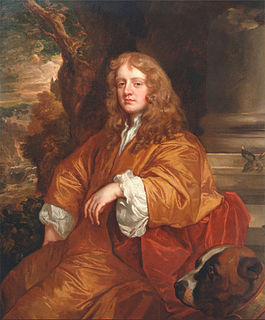 W
WSir Ralph Bankes (1631–1677) was a courtier of the restored Charles II and a knighted member of the Privy Chamber. He was the builder of Kingston Lacy, the restored seat of the Bankes family, designed by architect Sir Roger Pratt.
 W
WJohn Russell, 1st Earl of Bedford was an English royal minister in the Tudor era. He served variously as Lord High Admiral and Lord Privy Seal. Among the lands and property he was given by Henry VIII after the Dissolution of the Monasteries, were the Abbey and town of Tavistock, and the area that is now Covent Garden. Russell is the ancestor of all subsequent Earls and Dukes of Bedford and Earls Russell, including John Russell, Prime Minister of the United Kingdom and philosopher Bertrand Russell.
 W
WSir Maurice Berkeley of Bruton in Somerset and of Berkeley House, Clerkenwell, Middlesex, served as Chief Banner Bearer of England to Kings Henry VIII, Edward VI and to Queen Elizabeth I and rose rapidly in the Tudor court. He came from a cadet branch of the great Berkeley family of Berkeley Castle in Gloucestershire, but in his career his initial advantage was due to his mother's second marriage to Sir John FitzJames, Lord Chief Justice of the King's Bench 1526–1539, which by 1538 had brought him into the household of Thomas Cromwell, from which he passed into the royal household by 1539.
 W
WColonel William Careless was a Royalist officer of the English Civil War. It has been estimated in various written sources that he was born c. 1620, however, it is more likely that he was born c. 1610. He was the second son of John Careless of Broom Hall, Brewood, Staffordshire, and his wife Ellen Fluit. He is chiefly remembered as the companion of King Charles II when the fugitive monarch hid in the Royal Oak following his defeat at the Battle of Worcester. His surname was changed to Carlos, the Spanish for Charles, by order of Charles II. He died in 1689.
 W
WWilliam Carey was a courtier and favourite of King Henry VIII of England. He served the king as a Gentleman of the Privy chamber, and Esquire of the Body to the King. His wife, Mary Boleyn, is known to history as a mistress of King Henry VIII and the sister of Henry's second wife, Anne Boleyn.
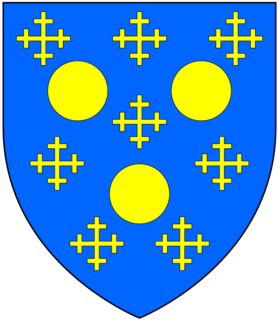 W
WSir William Coffin was a courtier at the court of King Henry VIII of England. He was a Gentleman of the Privy Chamber to King Henry VIII and Master of the Horse to Queen Jane Seymour. He was elected MP for Derbyshire in 1529.
 W
WThomas Darcy, 1st Baron Darcy of Chiche KG was an English courtier during the reign of Edward VI. He served as Vice-Chamberlain of the Household and Captain of the Yeomen of the Guard between 1550 and 1551 before his appointment as Lord Chamberlain of the Household. He was placed under house arrest for his support of Lady Jane Grey as Edward's successor.
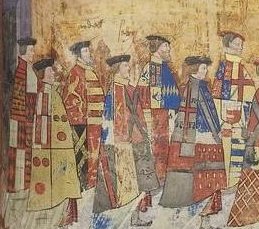 W
WHenry Courtenay, 1st Marquess of Exeter, 2nd Earl of Devon, KG, PC, feudal baron of Okehampton, feudal baron of Plympton, of Tiverton Castle, Okehampton Castle and Colcombe Castle all in Devon, was a grandson of King Edward IV, nephew of the queen consort, Elizabeth of York and a first cousin of King Henry VIII. Henry Courtenay was a close friend of Henry VIII's, having "been brought up of a child with his grace in his chamber."
 W
WSir Barnaby Fitzpatrick, 2nd Baron Upper Ossory, was educated at the court of Henry VIII of England with Edward, Prince of Wales. While he was in France he corresponded regularly with King Edward VI. He was active in suppression of Wyatt's rebellion in 1553. He went home to Ireland, where he had had a lifelong feud with the Earl of Ormonde. His wife and daughter were abducted in 1573 by the Grace family, supposedly at Ormonde's instigation. He killed the rebel Rory O'More in 1578.
 W
WGiovanni Florio (1552–1625), known as John Florio, was a linguist, poet, writer, translator, lexicographer, and royal language tutor at the Court of James I.
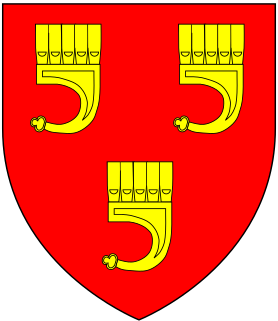 W
WSir Bernard Grenville was an English politician.
 W
WPhilip Sherard, 2nd Earl of Harborough, of Whissendine, Rutland, was a British landowner and Whig politician who sat in the House of Commons from 1708 to 1710 and later succeeded to the peerage as Earl of Harborough.
 W
WSir John Harrison of Balls Park, Hertfordshire was an English politician who sat in the House of Commons variously between 1640 and 1669. He supported the Royalist side in the English Civil War.
 W
WSir Roger Hill of Denham Place, Buckinghamshire was an English landowner, courtier and Whig politician who sat in the English and British House of Commons between 1679 and 1722.
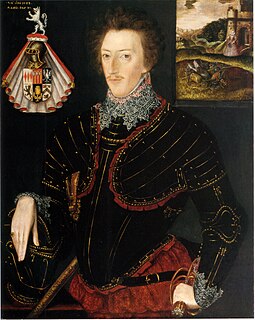 W
WSir Edward Hoby was an English diplomat, Member of Parliament, scholar, and soldier during the reigns of Elizabeth I and James I. He was the son of Thomas Hoby and Elizabeth Cooke, the nephew of William Cecil, Lord Burghley, and the son-in-law of Queen Elizabeth's cousin Henry Carey, 1st Baron Hunsdon.
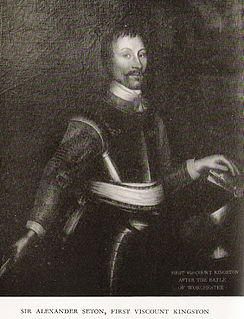 W
WSir Alexander Seton, 1st Viscount of Kingston, a Cavalier, was the first dignity Charles II conferred as King.
 W
WThomas Knyvet, 1st Baron Knyvet was an English courtier and Member of Parliament who played a part in foiling the Gunpowder Plot.
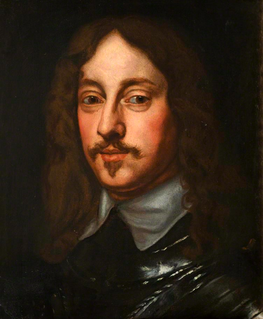 W
WMontagu Bertie, 2nd Earl of Lindsey, KG, PC was an English soldier, courtier, and politician who sat in the House of Commons between 1624 and 1626. He was created Baron Willoughby de Eresby by writ of acceleration in 1640 and inherited the peerage of Earl of Lindsey in 1642. He fought in the Royalist army in the English Civil War.
 W
WRichard Lockwood of Dews Hall, near Maldon, Essex was a British merchant and politician who sat in the House of Commons between 1713 and 1741.
 W
WSir James Long, 2nd Baronet was an English politician and Royalist soldier.
 W
WPhilip Herbert, 4th Earl of Pembroke and 1st Earl of Montgomery, KG KB PC was an English courtier, nobleman, and politician active during the reigns of James I and Charles I. Philip and his older brother William were the 'incomparable pair of brethren' to whom the First Folio of Shakespeare's collected works was dedicated in 1623.
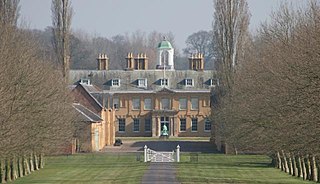 W
WGeorge Pitt was an English landowner and politician who sat in the House of Commons from 1660 to 1679.
 W
WGeorge Boleyn, Viscount Rochford was an English courtier and nobleman who played a prominent role in the politics of the early 1530s, and was the brother of Queen Anne Boleyn, from 1533 the second wife of King Henry VIII and thus the maternal uncle of Queen Elizabeth I. Following his father's promotion in the peerage in 1529 to Earl of Wiltshire and Earl of Ormond, he adopted his father's junior title Viscount Rochford as a courtesy title. He was accused of incest with his sister Anne during the period of her trial for high treason, as a result of which both were executed.
 W
WSir Ralph Sadler or Sadlier PC, Knight banneret was an English statesman, who served Henry VIII as Privy Councillor, Secretary of State and ambassador to Scotland. Sadlier went on to serve Edward VI. Having signed the device settling the crown on Jane Grey in 1553, he was obliged to retire to his estates during the reign of Mary I. Sadlier was restored to royal favour during the reign of Elizabeth I, serving as a Privy Councillor and once again participating in Anglo-Scottish diplomacy. He was appointed Chancellor of the Duchy of Lancaster in May 1568.
 W
WSir John Shaw, 1st Baronet of Eltham Lodge, Kent was an English merchant and politician who sat in the House of Commons from 1661 to 1679.
 W
WSir Michael Stanhope of Shelford in Nottinghamshire, was an influential courtier who was beheaded on Tower Hill, having been convicted of conspiring to assassinate John Dudley, 1st Duke of Northumberland, and others.
 W
WSir Humphrey Style, 1st Baronet of Beckenham, Kent was a courtier to kings James I and Charles I of England.
 W
WSir Benjamin Tichborne, 1st Baronet was an English landowner, courtier and politician who sat in the House of Commons at various times between 1588 and 1593.
 W
WSir Francis Weston KB was a gentleman of the Privy Chamber at the court of King Henry VIII of England. He became a friend of the king but was later accused of high treason and adultery with Anne Boleyn, the king's second wife. Weston was condemned to death, together with George Boleyn, Viscount Rochford, Henry Norris, William Brereton and Mark Smeaton. They were all executed on 17 May 1536, two days before Anne Boleyn suffered a similar fate.
 W
WSir Richard Williams, also known as Sir Richard Cromwell, was a Welsh soldier and courtier in the reign of Henry VIII who knighted him on 2 May 1540. He was a maternal nephew of Thomas Cromwell, profiting from the Dissolution of the Monasteries in which he took an active part. He was the patrilineal great-grandfather of Oliver Cromwell.